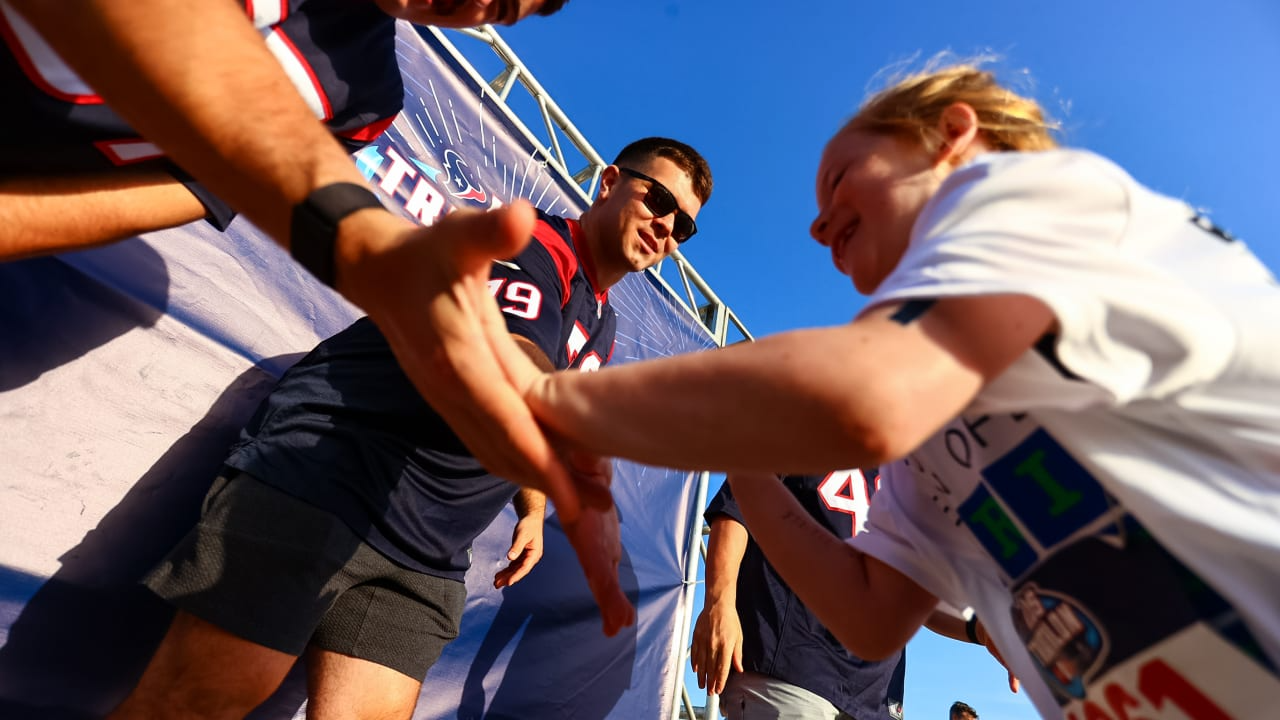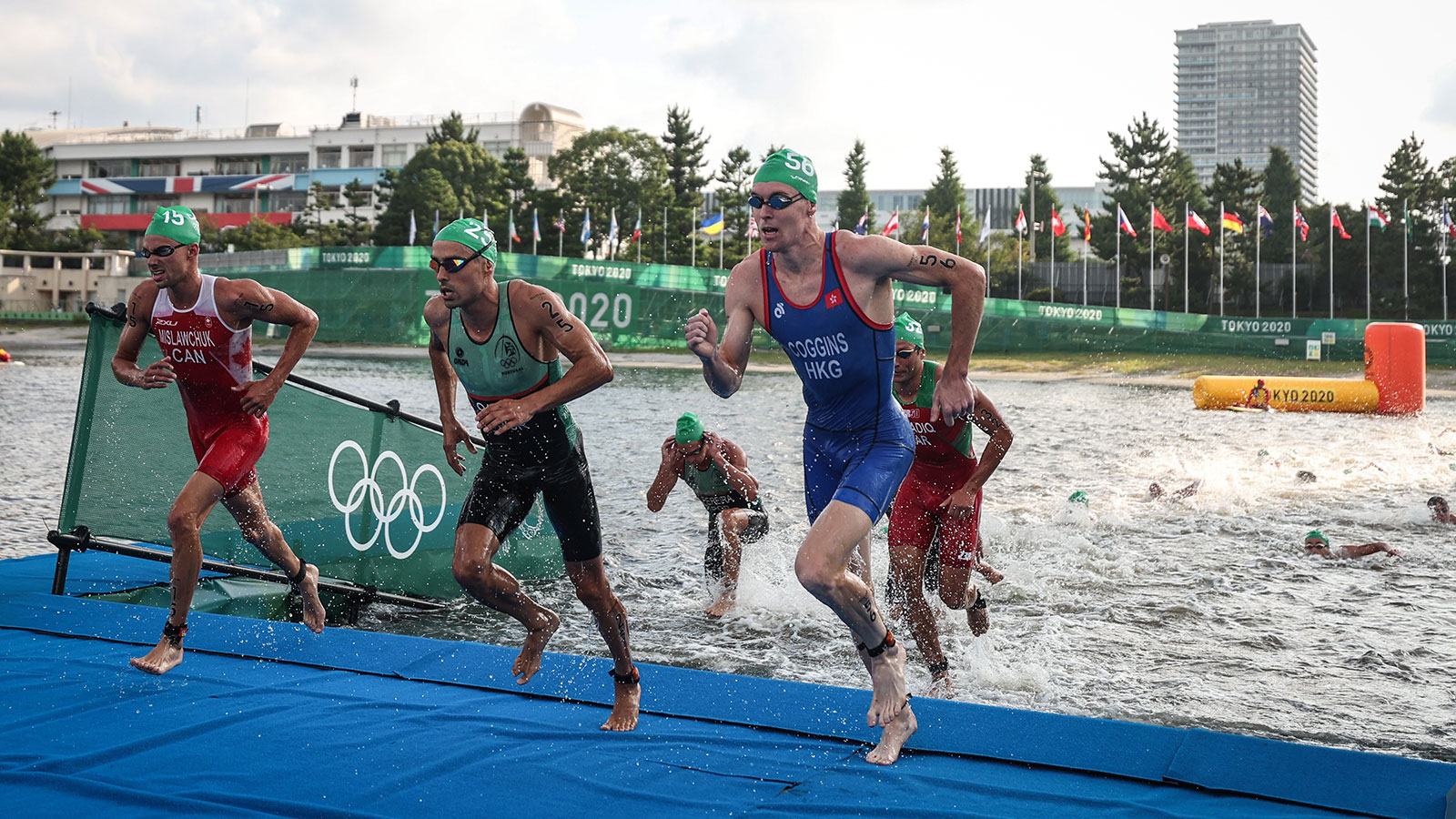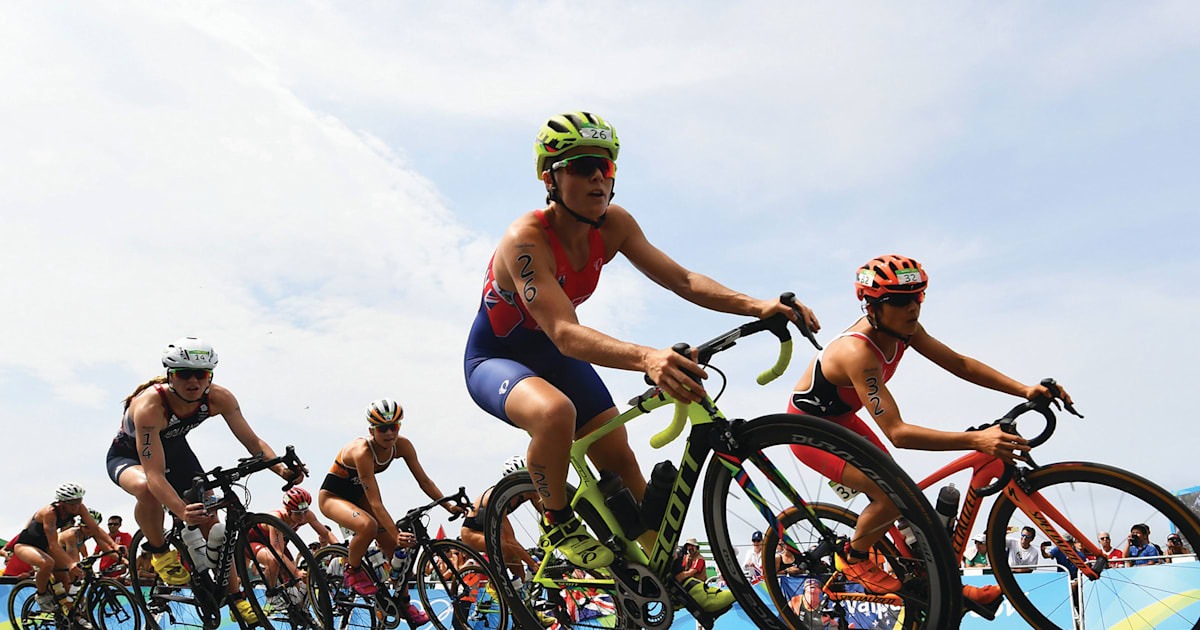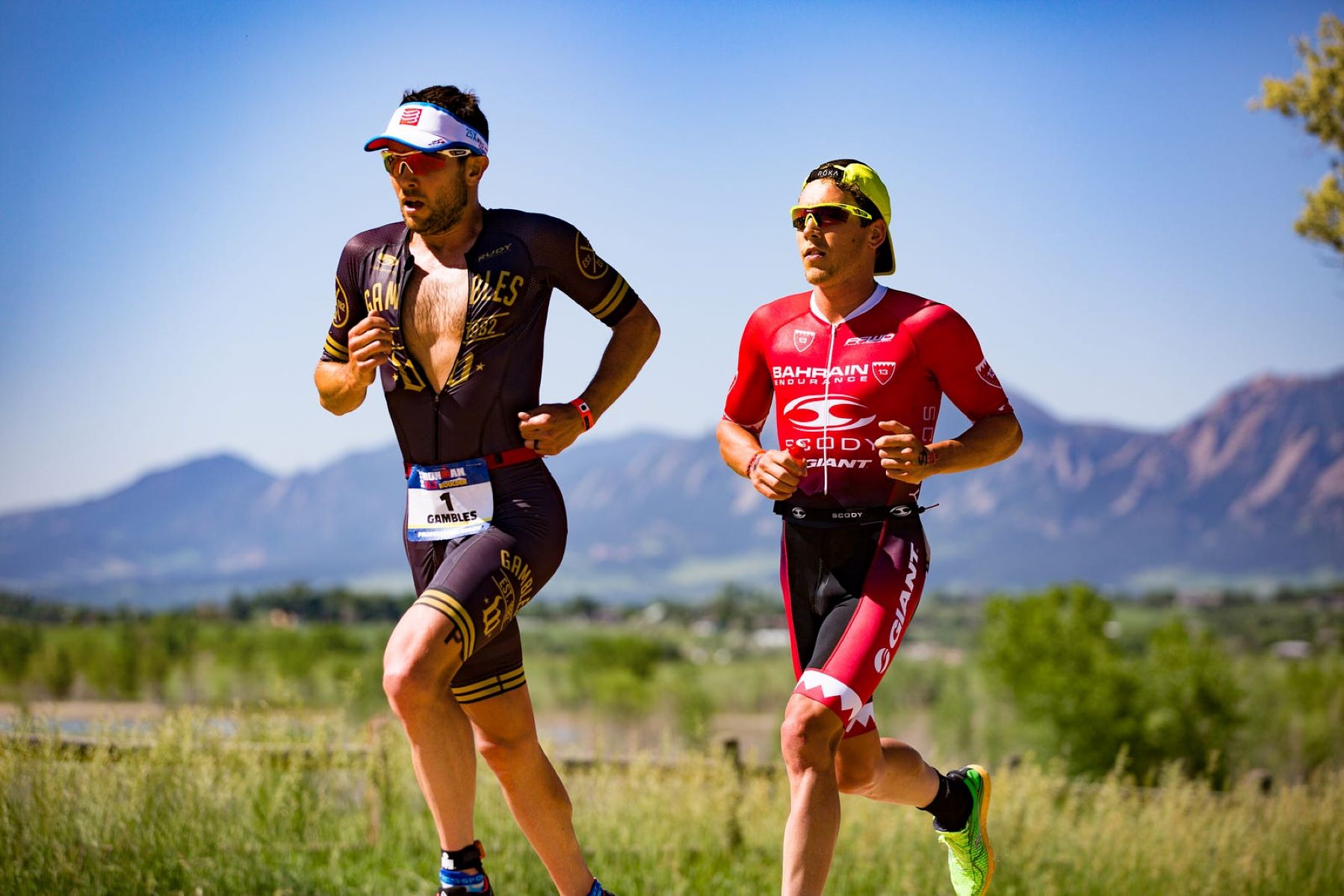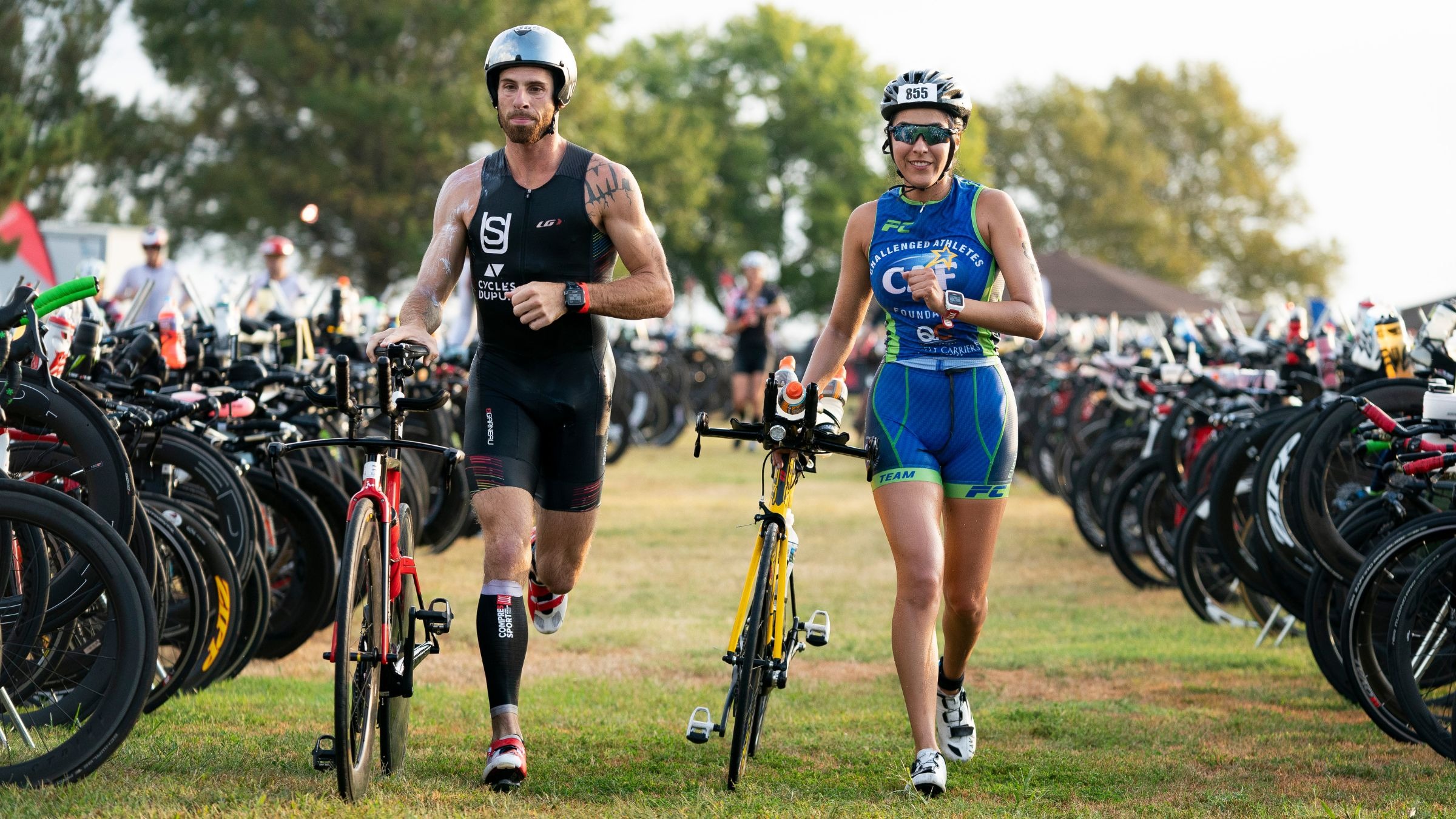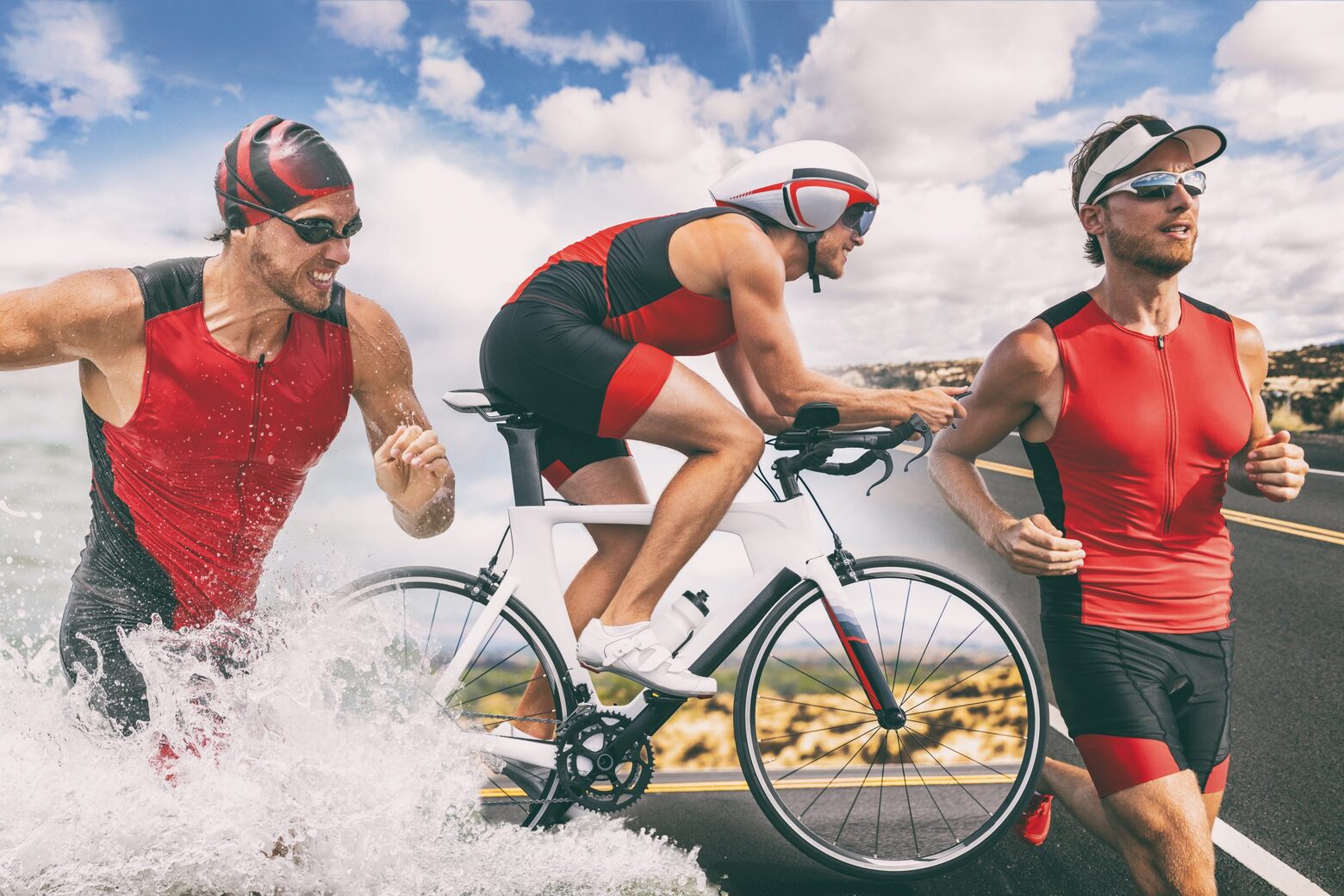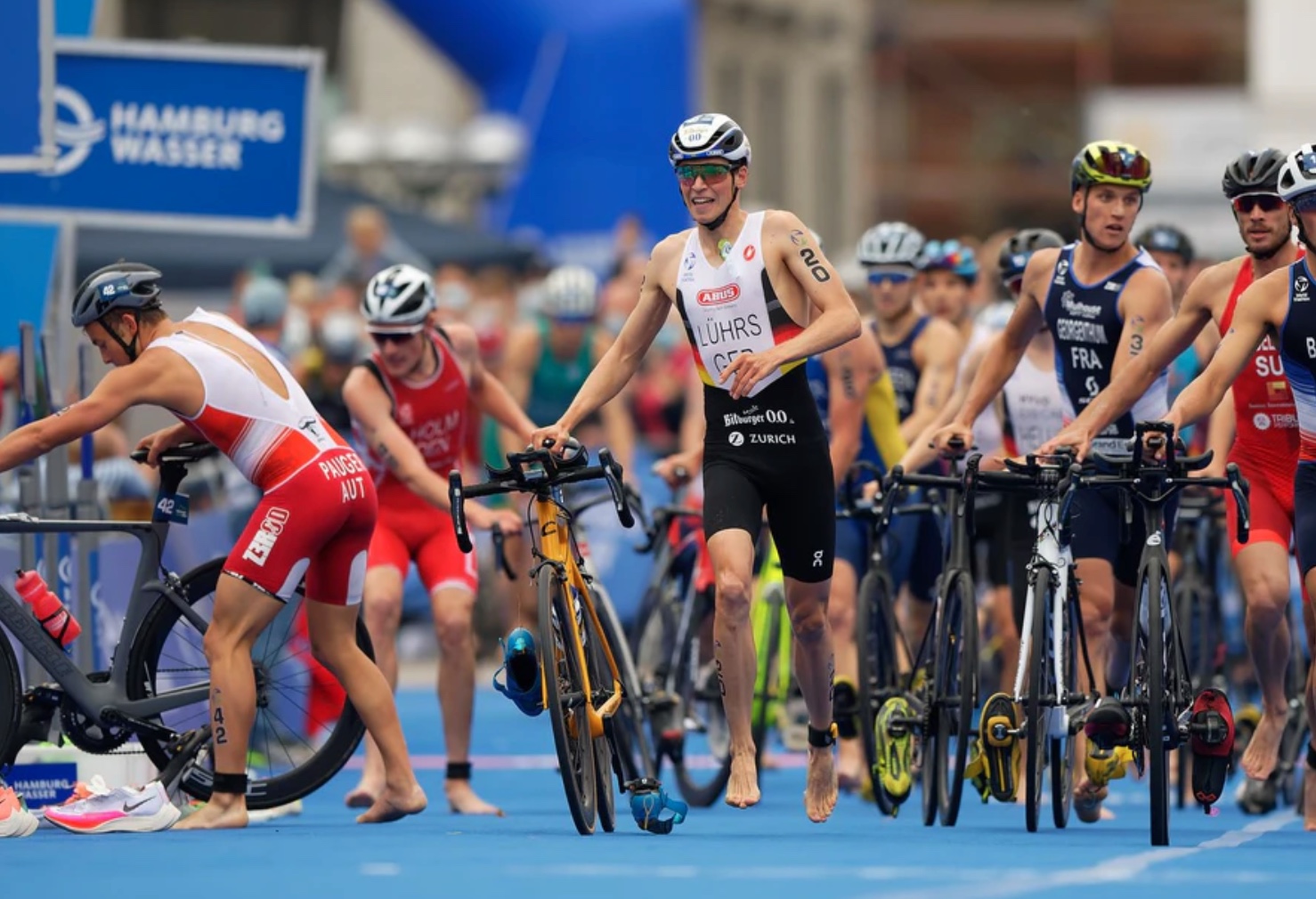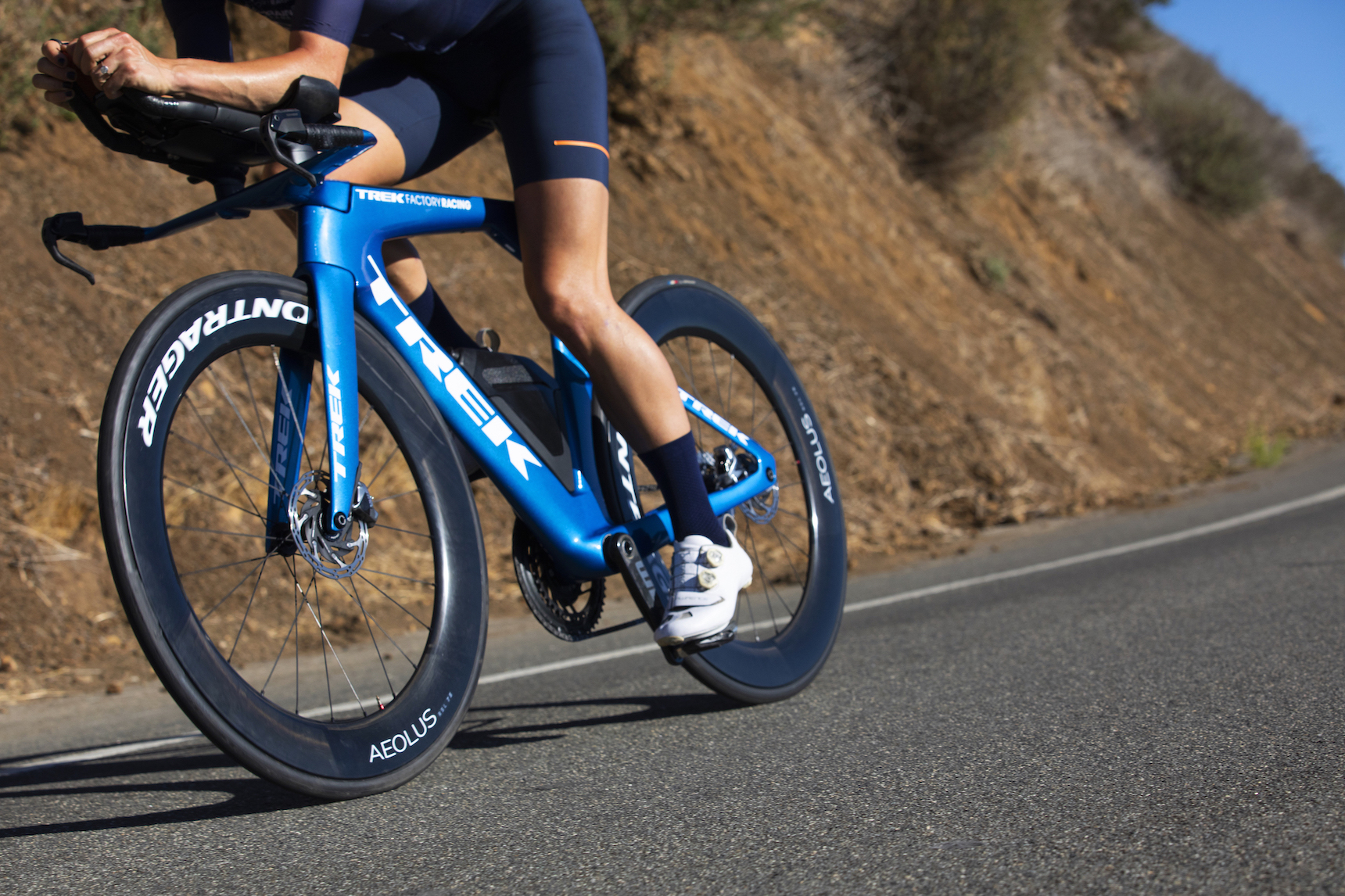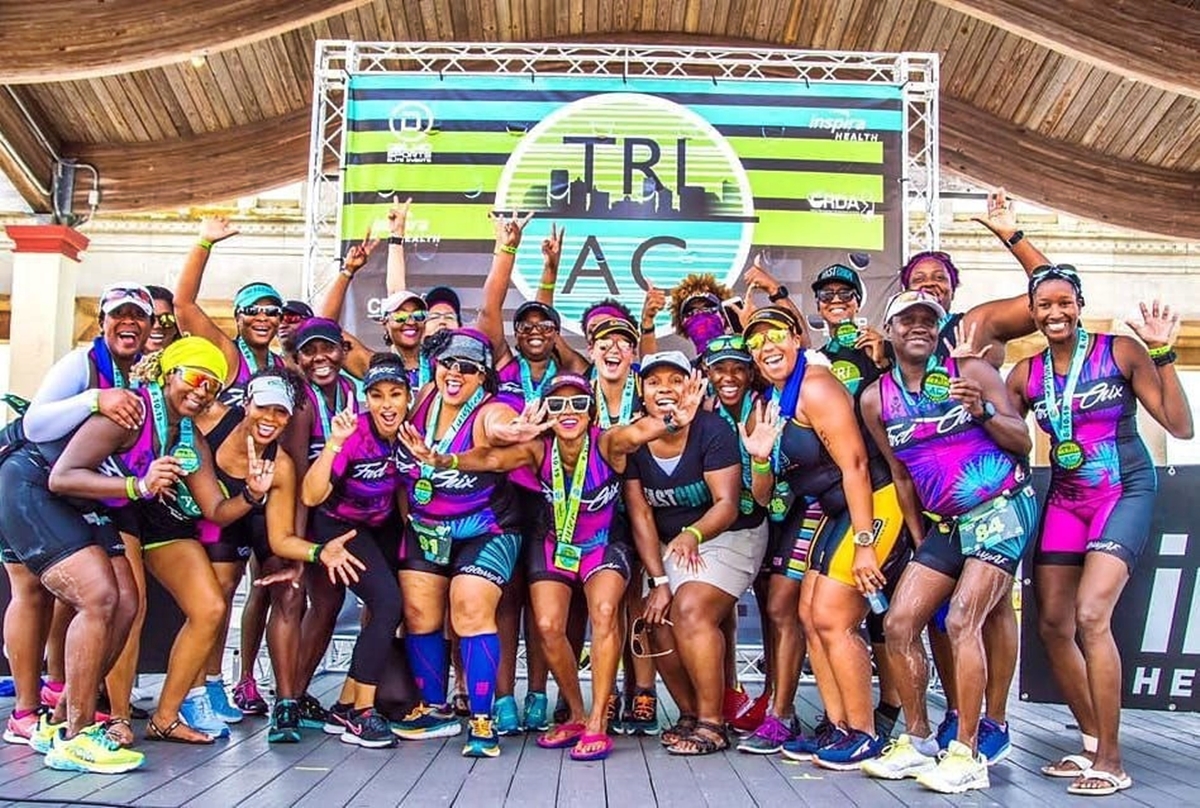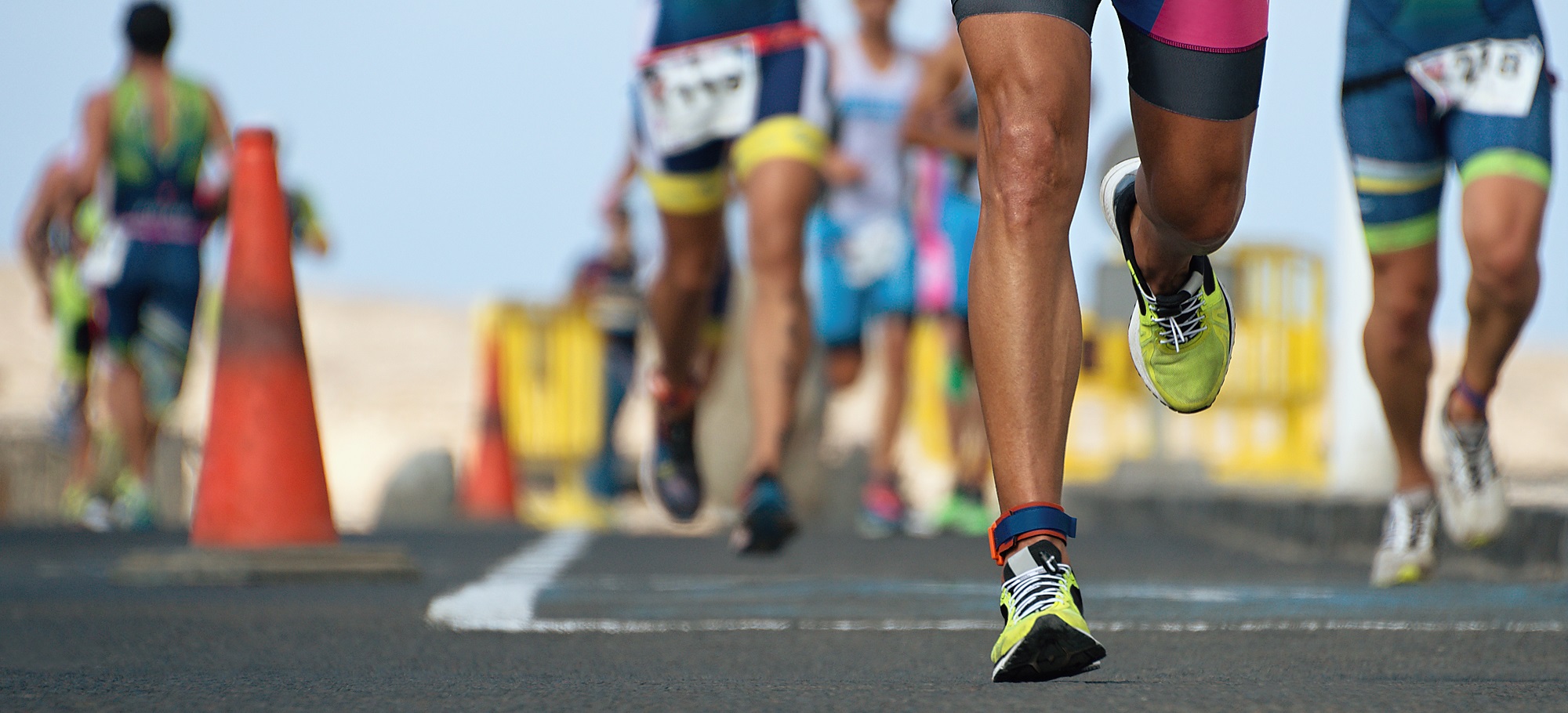

Featured
How Long Is A Triathlon Run
Modified: March 1, 2024
Learn about the length of the triathlon run and what you can expect from this featured endurance event. Join us as we explore the distances and challenges involved.
Overview
A triathlon is a multi-sport race that combines swimming, cycling, and running. It is a highly challenging and demanding event that tests an athlete’s endurance, strength, and mental resilience. While all three disciplines of triathlon are important, the triathlon run is often considered the most grueling and decisive stage of the race. In this article, we will explore the various aspects of the triathlon run, including distances and categories, training tips, mental preparation, nutritional considerations, choosing the right footwear, and tips for a successful run. Whether you are a seasoned triathlete or a beginner looking to participate in your first triathlon, understanding the intricacies of the triathlon run is essential to your success and performance.
The length of the triathlon run can vary depending on the distance of the race. The most common triathlon distances are sprint, Olympic, half-Ironman, and Ironman. In a sprint-distance triathlon, the run portion typically ranges from 5 to 10 kilometers (3.1 to 6.2 miles), while in an Ironman-distance triathlon, the run leg spans a full marathon of 42.2 kilometers (26.2 miles). The triathlon run can take place on various terrains, including roads, trails, or a combination of both, adding an extra challenge to the race.
Training for the triathlon run requires a balanced approach that includes both cardiovascular endurance and strength training. Regular running sessions should be incorporated into your training plan, gradually increasing the distance and intensity to build stamina. In addition to running, cross-training activities such as swimming and cycling can help improve overall fitness and reduce the risk of overuse injuries.
It is not just physical endurance that plays a role in the triathlon run; mental preparation is equally important. Endurance activities can be mentally taxing, and staying focused and motivated during the run leg is crucial. Mental strategies such as visualization, positive self-talk, and goal setting can help athletes stay mentally strong and push through challenging moments during the race.
Proper nutrition also plays a pivotal role in a successful triathlon run. Adequate fueling before, during, and after the race is essential to maintain energy levels and prevent fatigue. Carbohydrates, proteins, and healthy fats should be included in pre-race and post-race meals, and hydration should be a priority throughout the event.
Choosing the right footwear is another critical aspect of the triathlon run. Running shoes should provide proper support and cushioning to prevent injuries and maximize performance. Lightweight and breathable shoes are particularly beneficial for long-distance runs, and it is essential to break them in before the race to avoid discomfort and blisters.
Finally, implementing some essential tips can significantly improve your triathlon run performance. Pace yourself during the run, starting conservatively to avoid burning out too quickly. Practice transitions between swim to bike and bike to run to optimize your efficiency. Listen to your body and adjust your pace or strategy accordingly. Celebrate your accomplishments as you cross the finish line, knowing that you have given your best effort.
Recovery and injury prevention are essential aspects of post-race care. Adequate rest and active recovery activities such as stretching and foam rolling can help reduce muscle soreness and prevent injuries. It is also crucial to address any injuries or discomfort promptly, seeking professional help if needed.
Overall, the triathlon run is a physically and mentally demanding stage of the race that requires careful preparation and training. By understanding the distances and categories, implementing effective training strategies, focusing on mental preparation and nutrition, and taking care of your feet with proper footwear, you can optimize your performance and achieve your goals in the triathlon run.
Distances and Categories
The triathlon run is a crucial stage of the race, and the distance and category you choose to participate in will determine the length and intensity of the run leg. Triathlons are categorized based on the distances covered in each discipline: swimming, cycling, and running.
The most common triathlon distances are sprint, Olympic, half-Ironman, and Ironman. In a sprint-distance triathlon, the run leg typically ranges from 5 to 10 kilometers (3.1 to 6.2 miles). This is the shortest distance and is suitable for beginners or those looking for a fast-paced, high-intensity race experience.
The Olympic-distance triathlon is a step up from the sprint distance, with the run portion usually spanning 10 kilometers (6.2 miles). It provides a more challenging test of speed and endurance, making it popular among intermediate-level triathletes.
For those seeking an even greater challenge, the half-Ironman distance triathlon awaits. This category combines a 1.9-kilometer (1.2-mile) swim, a 90-kilometer (56-mile) bike ride, and a half-marathon run of 21.1 kilometers (13.1 miles). The run leg is a half marathon, making it a significant test of both physical and mental fortitude.
The ultimate endurance test in the world of triathlon is the Ironman-distance race. Athletes must complete a 3.8-kilometer (2.4-mile) swim, a 180-kilometer (112-mile) bike ride, and a full marathon run of 42.2 kilometers (26.2 miles). The triathlon run in an Ironman race is a full marathon, demanding exceptional endurance and mental resilience.
Aside from these standard distances, there are also variations and specialized categories within the triathlon world. For example, there are off-road triathlons that take place on rugged terrains and may include trail running. There are also relay triathlons, allowing teams to divide the disciplines among their members.
It’s important to choose a triathlon distance and category that aligns with your fitness level, experience, and personal goals. Beginners may find the sprint distance more manageable, while seasoned triathletes might strive for the demanding challenge of an Ironman race. Regardless of the distance, each category offers its own unique experience and rewards.
As you determine which distance and category to participate in, consider your current fitness level, training capacity, and time commitment. It’s crucial to set realistic goals and gradually progress your training to ensure a safe and enjoyable race experience.
Remember, triathlons are not just about achieving a specific distance; they are about personal growth, pushing your boundaries, and enjoying the journey. Whether you choose a sprint distance or aim to conquer the Ironman, the triathlon run will be a pivotal moment in your race, testing your physical and mental strength like never before.
Training for a Triathlon Run
To successfully complete the triathlon run, training plays a crucial role. Developing the necessary endurance, strength, and speed will help you conquer the run leg effectively. Here are some key tips to keep in mind when training for a triathlon run.
1. Gradual Increase: Build up your running distance gradually to avoid overuse injuries. Start with shorter distances and gradually increase the mileage over time. This progression allows your body to adapt and reduces the risk of injuries.
2. Consistency: Be consistent with your training. Regularly schedule running sessions throughout the week to develop cardiovascular endurance, muscular strength, and efficiency. Aim for at least 3-4 runs per week, depending on your fitness level.
3. Variety: Include different types of runs in your training program to improve overall fitness. Incorporate long, slow distance runs to build endurance, tempo runs to work on speed and lactate threshold, and interval training to enhance your anaerobic capacity.
4. Cross-training: Don’t neglect cross-training activities such as swimming and cycling. These activities improve your cardiovascular fitness and help prevent overuse injuries. Incorporate them into your training schedule to achieve a well-rounded physical condition.
5. Strength Training: Include strength training exercises that target the muscles used in running, such as the quadriceps, hamstrings, calves, and core. This will help improve your running efficiency and reduce the risk of injuries. Add exercises like squats, lunges, calf raises, and planks to your routine.
6. Speed Work: Incorporate speed work into your training to improve your running pace. This can include interval training, hill sprints, or tempo runs. These workouts will help you develop speed and improve your overall race performance.
7. Recovery: Allow adequate time for rest and recovery between training sessions. This allows your body to repair and rebuild, reducing the risk of overtraining and injuries. Incorporate active recovery activities such as stretching, foam rolling, and massage to aid in recovery.
8. Practice Transitions: Include brick workouts in your training, where you immediately transition from the bike to the run. This helps simulate race conditions and allows your body to adjust to the feeling of running off the bike. Incorporating these transitions will improve your efficiency on race day.
Remember, consistency and progressive overload are key in your training journey. Set realistic goals and tailor your training program to your individual needs. Listen to your body and adjust your training plan as needed. Stay motivated by tracking your progress and celebrating small achievements along the way.
By following these training tips, you’ll be well-prepared for the triathlon run. Remember, it’s not just about reaching the finish line; it’s about the journey and the personal growth that comes with it. Embrace the challenge, stay committed, and enjoy the experience of training for and completing a triathlon run.
Mental Preparation
The triathlon run not only tests your physical abilities but also requires mental fortitude. Mental preparation is essential to overcome the challenges and push through when fatigue sets in. Here are some strategies to help you mentally prepare for the triathlon run.
1. Visualization: Create a mental image of yourself successfully completing the run leg. Visualize yourself running with ease, feeling strong and confident. Imagine crossing the finish line and savoring the sense of accomplishment. Visualizing success can boost your confidence and help you overcome doubts or mental barriers during the race.
2. Positive Self-Talk: Cultivate a positive mindset through self-talk. Replace negative thoughts with encouraging and motivating statements. Remind yourself of your training, your capabilities, and your goals. Repeat affirmations such as “I am strong,” “I can do this,” and “I am prepared.” Positive self-talk can provide the mental resilience needed to tackle tough moments during the run.
3. Goal Setting: Set specific, measurable, achievable, relevant, and time-bound (SMART) goals for your triathlon run. Having clear goals can provide focus and motivation. Break down the run into smaller milestones, such as completing each kilometer or reaching specific landmarks along the course. Celebrate these mini successes as you progress, fueling your confidence and motivation.
4. Mental Rehearsal: Mentally rehearse different scenarios that may occur during the run. Visualize how you will handle challenges such as fatigue, pain, or negative thoughts. Practice strategies such as maintaining a steady pace, utilizing proper running form, and implementing mental strategies to overcome any obstacles that may arise.
5. Develop a Race Plan: Create a detailed race plan that includes pacing strategies, hydration and fueling strategies, and mental checkpoints. Having a race plan helps you stay focused and gives you a sense of direction during the run. Break the race into segments and set specific objectives for each segment. This approach helps you stay present and engaged throughout the run.
6. Focus on the Present Moment: Stay present and focus on the current moment during the run. Pay attention to your breathing, your form, and the sights and sounds around you. Avoid getting caught up in negative thoughts or worrying about the end result. By staying present, you can better manage discomfort and maintain a steady mental state.
7. Practice Mindfulness and Relaxation Techniques: Incorporate mindfulness and relaxation techniques into your training routine. Deep breathing exercises, meditation, and progressive muscle relaxation can help you reduce anxiety, improve concentration, and promote a calm mindset. Regular practice of these techniques can enhance your ability to stay composed and focused during the triathlon run.
8. Embrace the Challenge and Enjoy the Experience: Embrace the mental and physical challenge of the triathlon run. Understand that it will be tough, but that’s what makes it rewarding. Embrace the discomfort, knowing that it is a testament to your strength and determination. Rather than viewing it as a chore, reframe the run as an opportunity to showcase your abilities and achieve personal growth.
By incorporating these mental preparation strategies into your training and race-day routine, you will be better equipped to handle the mental demands of the triathlon run. Remember that mental toughness is a skill that can be developed through practice and experience. Stay positive, stay focused, and embrace the journey of the triathlon run.
Nutritional Considerations
Nutrition plays a key role in fueling your performance during the triathlon run. Proper fueling before, during, and after the race is essential for maintaining energy levels and optimizing your performance. Here are some nutritional considerations to keep in mind for the triathlon run.
1. Pre-Race Nutrition: Consume a balanced meal about 2-3 hours before the race. Include carbohydrates for energy, lean proteins for muscle repair, and healthy fats for sustained energy. Avoid high-fiber or fatty foods that may cause digestive issues. Hydrate well before the race to ensure proper hydration status.
2. During the Run: Maintain proper hydration and fueling during the run. Depending on the duration of the race, consume carbohydrates in the form of sports drinks, gels, or easily digestible snacks. Aim for around 30-60 grams of carbohydrates per hour to provide a steady source of fuel for your muscles.
3. Hydration: Stay properly hydrated before, during, and after the triathlon run. Aim to drink water or sports drinks regularly throughout the race, especially in hot and humid conditions. Listen to your body’s thirst cues and drink accordingly. Electrolyte replacement drinks can also help replenish sodium, potassium, and other electrolytes lost through sweat.
4. Recovery Nutrition: After the race, replenish your glycogen stores and aid in muscle recovery by consuming a combination of carbohydrates and proteins within 30 minutes to an hour post-race. This can include a recovery shake, a balanced meal, or snacks such as Greek yogurt with fruits or a protein bar.
5. Individualized Approach: Nutritional needs can vary from person to person, so it’s important to find what works best for you through trial and error during training. Experiment with different fueling strategies and foods to determine what provides sustained energy without causing digestive discomfort.
6. Practice Nutrition in Training: Use your training sessions as an opportunity to practice your race-day nutrition plan. Test different fueling options and hydration strategies to see how your body responds. This will help you identify any potential issues and make adjustments before your race day.
7. Seek Professional Advice: If you are unsure about your specific nutritional needs for the triathlon run, consider consulting a sports nutritionist or registered dietitian who specializes in endurance sports. They can provide personalized guidance based on your training level, body composition, and specific dietary requirements.
Remember, nutrition is a critical component of your overall triathlon performance. Proper fueling and hydration can make a significant difference in your endurance, stamina, and recovery. Prioritize your nutrition plan alongside your training to optimize your race-day performance and overall well-being.
Choosing the Right Footwear
Choosing the right footwear is crucial for a successful triathlon run. The shoes you wear can significantly impact your comfort, performance, and injury prevention. Here are some considerations to keep in mind when selecting running shoes for the triathlon run.
1. Proper Fit: Ensure that your running shoes fit properly. They should provide a secure and snug fit, with enough room in the toe box to wiggle your toes. Avoid shoes that are too tight or too loose, as they can cause discomfort, blisters, or even lead to foot injuries.
2. Comfort: Prioritize comfort when selecting running shoes. Choose shoes that feel comfortable from the moment you put them on. Consider the cushioning and support provided by the shoes, making sure they suit your running style and preferences.
3. Arch Support: Determine your foot arch type and select shoes that offer appropriate arch support. Flat feet may benefit from shoes with more arch support, while higher arches may require shoes with more flexibility. Knowing your foot arch type can help you find shoes that provide the right level of support and stability.
4. Breathability: Look for shoes that offer good breathability. Running shoes with mesh upper materials allow for better air circulation, keeping your feet cool and reducing the risk of discomfort or bacterial growth. Breathable shoes are especially beneficial during longer triathlon distances when your feet may be exposed to more moisture.
5. Lightweight: Consider the weight of the shoes. Lighter shoes can contribute to a more efficient and faster run, particularly during longer distances. However, ensure that lightweight shoes still provide adequate cushioning and support to protect your feet from impact-related injuries.
6. Terrain-Specific Shoes: Take into account the type of terrain you will be running on during the triathlon. Different shoes are designed for specific terrains, such as road-running shoes with durable outsoles for pavement or trail-running shoes with increased traction and stability for off-road trails. Choose shoes that best suit the surface you will be running on.
7. Break Them In: It’s crucial to break in your running shoes before the triathlon. Wear them during training runs to allow your feet and shoes to adapt to one another. Breaking in your shoes ensures they mold to your feet, reducing the risk of discomfort and blisters on race day.
8. Seek Expert Advice: If you are uncertain about which running shoes would be best for you, visit a specialty running store or consult with a running shoe expert. They can analyze your gait, foot strike, and foot shape to recommend shoes that suit your biomechanics and running style.
Remember, finding the right footwear may require some trial and error. It’s essential to test out different shoes during training to determine what feels most comfortable and supportive for your individual needs. Choosing the right running shoes can enhance your running experience and help you perform your best during the triathlon run.
Tips for a Successful Triathlon Run
The triathlon run is the final stage of the race that can make or break your overall performance. To have a successful triathlon run, here are some tips to keep in mind:
1. Pace Yourself: Start the run leg at a comfortable pace that you can maintain throughout the race. Avoid starting too fast and burning out early. Conserving energy in the early stages will help you maintain a steady pace and finish strong.
2. Practice Transitions: Train your body to transition smoothly from the bike to the run. Incorporate brick workouts into your training routine, where you immediately run after cycling. This helps your body adapt to the different muscle groups used in running and improves your efficiency during the triathlon run.
3. Stay Mentally Focused: Keep your mind focused and engaged during the run leg. Set small goals for each portion of the run and celebrate achieving them. Maintain a positive mindset and use positive self-talk to overcome any mental hurdles or doubts that may arise.
4. Hydrate and Refuel: Stay hydrated throughout the run by regularly drinking water or sports drinks at aid stations. Utilize fueling strategies such as energy gels, chews, or other easily digestible snacks to maintain your energy levels. Practice your fueling and hydration strategies during training to find what works best for you.
5. Maintain Proper Form: Pay attention to your running form to maximize efficiency and prevent injuries. Keep your posture upright, shoulders relaxed, and arms swinging naturally. Maintain a midfoot strike and avoid overstriding. Focus on maintaining a smooth and efficient stride throughout the run.
6. Mental Mantras: Use positive affirmations or mantras to keep yourself motivated and focused during the run. Repeat phrases such as “I am strong,” “I can do this,” or “One step at a time” to help push through challenging moments and maintain a positive mindset.
7. Enjoy the Experience: Remember to enjoy the experience of the triathlon run. Take in the surroundings, cheer on fellow competitors, and embrace the physical and mental challenge. Engage with the spectators and draw inspiration from their support. It’s not just about the finish line; it’s about the journey and the personal growth achieved along the way.
8. Listen to Your Body: Pay attention to any signs of pain, discomfort, or fatigue during the run. If needed, slow down your pace or even take short walking breaks to conserve energy and prevent injury. Listen to your body and make adjustments as necessary to ensure a safe and successful run.
Each triathlon run is a unique experience, so it’s important to adapt these tips to your individual needs and preferences. Through consistent training, mental preparation, and smart race-day strategies, you can have a successful triathlon run that leaves you feeling accomplished and proud of your achievements.
Recovery and Injury Prevention
After completing the triathlon run, recovery and injury prevention are essential for allowing your body to heal, rebuild, and return to optimal performance. Here are some key considerations to help you recover effectively and reduce the risk of injuries:
1. Cool Down: Implement a proper cool-down routine after the run leg. Gradually decrease your pace and include light jogging or walking to allow your heart rate to gradually decrease. Follow it up with dynamic stretches to improve flexibility and promote muscle recovery.
2. Nutrition and Hydration: Replenish your body with the right nutrients and fluids after the triathlon run. Consume a balanced post-race meal or snack that includes carbohydrates, proteins, and healthy fats. Hydrate adequately to replace fluids lost during the race. Proper nutrition and hydration aid in muscle recovery and replenishment of glycogen stores.
3. Active Recovery: Engage in active recovery activities such as gentle stretching, foam rolling, or using a massage ball to relieve muscle soreness and promote blood circulation. Active recovery helps alleviate tension, reduce inflammation, and improve recovery time.
4. Rest and Sleep: Allow yourself sufficient rest and sleep to aid in the recovery process. Restorative sleep enables the body to repair and regenerate muscles, improve immune function, and replenish energy stores. Aim for 7-9 hours of quality sleep per night.
5. Gradual Return to Training: Give your body adequate time to recover before resuming intense training. Listen to your body’s cues and gradually reintroduce training sessions, starting with low-intensity workouts and gradually increasing the volume and intensity over time. This gradual approach helps prevent overuse injuries and allows for proper recovery.
6. Injury Prevention Exercises: Incorporate strength and stability exercises into your regular training routine to prevent injuries. Focus on exercises that target muscles used in running, such as the core, hips, glutes, and legs. This helps improve muscular imbalances, stability, and overall body alignment.
7. Listen to Your Body: Pay attention to any signs of injury or discomfort during your training or recovery phase. If you experience pain, seek professional guidance from a healthcare provider or sports medicine specialist. Addressing injuries promptly can prevent them from worsening and help you get back to training sooner.
8. Cross-Training and Variety: Incorporate cross-training activities such as swimming, cycling, or low-impact workouts into your training routine. This helps reduce the risk of repetitive strain injuries and provides a variety of movements to engage different muscle groups. Cross-training also promotes overall fitness and prevents overuse injuries.
9. Pacing Yourself: Avoid jumping into intense training or races immediately after a triathlon. Allow your body sufficient time to recover and adapt before taking on new challenges. Overtraining and pushing your limits too soon can lead to burnout and an increased risk of injuries.
By following these recovery and injury prevention strategies, you can optimize your body’s healing process and reduce the risk of setbacks. Prioritize your health and well-being after the triathlon run, and remember that proper recovery is just as important as the training itself.
Conclusion
The triathlon run is a physically and mentally demanding stage of the race that requires careful preparation, training, and strategy. By understanding the distances and categories, implementing effective training strategies, focusing on mental preparation and nutrition, choosing the right footwear, and following tips for a successful run, you can optimize your performance and achieve your goals in the triathlon.
From sprint to Ironman distances, the triathlon run offers a unique challenge for athletes of all levels. It requires not only physical endurance but also mental fortitude and resilience. By gradually building your running distance, incorporating cross-training activities, and practicing proper nutrition and hydration, you can enhance your performance on race day.
Mental preparation is just as important as physical training. Visualizing success, maintaining a positive mindset, and setting SMART goals can help you overcome obstacles and push through challenging moments during the run. Embrace the journey, stay present, and focus on the small achievements along the way.
The right footwear plays a vital role in ensuring comfort, performance, and injury prevention. Choose running shoes that fit well, provide adequate support, and suit the terrain you’ll be running on. Practice proper training techniques and listen to your body to prevent injuries and ensure a safe and successful run.
After completing the triathlon run, prioritize recovery and injury prevention. Implement a proper cool-down routine, replenish your body with nutritious foods and fluids, engage in active recovery, and allow adequate rest and sleep. Gradually return to training and listen to your body’s signals to prevent overuse injuries.
Ultimately, participating in a triathlon run is a challenging but rewarding experience. It requires dedication, perseverance, and a willingness to push beyond your limits. Whether you’re a seasoned triathlete or a beginner, incorporating the tips and strategies mentioned in this article can help you excel in the triathlon run and achieve your goals with confidence.
